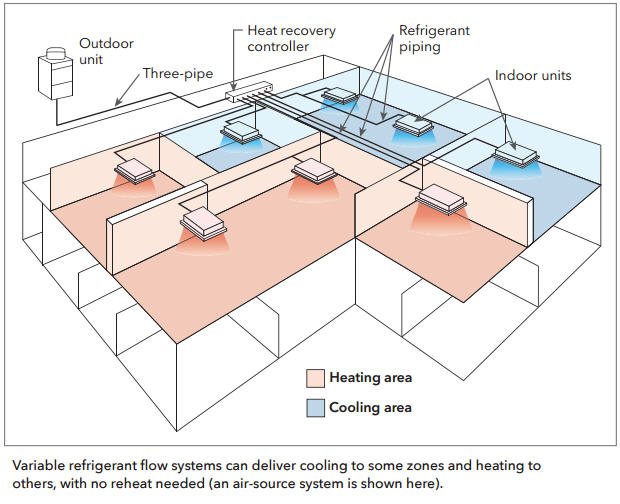Air conditioners are essential appliances in the house and workplace. Air conditioners maintain the temperature and moisture in the room and improve the air quality. They circulate clean air that is free of dirt and dust particles. A sound air conditioning system reduces heat and humidity and improves people’s performance. It creates a clean environment that is ideal for families and commercial places. VRF system is preferred for residential and commercial uses because it is energy efficient and easy to install. They are an enhanced version of ductless mini splits, and they can heat and cool different areas in a place simultaneously. It is used in places that need simultaneous heating and cooling to create individually controlled temperature zones.
Also Read: Work with safety!
Special features of VRF air conditioners
- The refrigerant is the only cooling material used in this system.
- Inverter compressors allow low power consumption with partial heating or cooling loads.
- Several indoor units are in the same refrigerant loop circuit.
- It is easy to expand the unit to suit the needs of large projects.
Types of VRF air conditioners
Heat pump system (2-pipe)
The heat pump system allows both cooling and heating, but not simultaneously. When it is in cooling mode, it works as an evaporator, and when it is in heating mode, it works as a condenser. It is used in places like retail stores and cellular offices where heating and cooling are required.
Heat recovery system (3-pipe)
In this system, both heating and cooling are operated simultaneously. There are two separate units; one works as an evaporator and the other as a condenser. It is used in places where there is a constant temperature change.
Water-cooled system
It is the most commonly used system in which the condensing units are connected to several indoor units through refrigeration pipework. It uses a plate-type condenser to operate the cooling units. The heat exchanger transmits the heat to a water loop connected to a cooling tower that transfers the heat to the atmosphere. This system is installed even in small spaces.
Gas driven system
This system is used in places that have a limited power supply. It operates on gas, and it has a gas-powered outdoor unit connected to several indoor units. It reduces electricity consumption, CO2 emission and running costs. They provide additional benefits like hot water generation and heat generation.
Benefits of VRF system
Customized heating and cooling: VRF systems can heat and cool different zones simultaneously in the same place. People can customize the temperature settings for the area they use without disturbing the other occupants.
Flexible design: VRF systems come in many sizes and types to fit any application. Sleek and compact designs are available to meet the needs of people with limited space.
Less noise: VRF systems are quiet while running and don’t disturb the other occupants in the building.
Easy installation: VRF systems are lightweight and compact. They are installed easily and don’t need any special equipment for installation. The installation process will not affect the normal operations in the place.
Energy-efficient: VRF systems are 30% more energy-efficient than conventional HVAC systems. The compressor speed delivers only the required temperature and saves energy, eliminating energy loss through ductwork.
A VRF system provides design flexibility, superior comfort and energy savings. It suits small areas, enables precise temperature control and offers simultaneous heating and cooling. The installation and maintenance costs are meagre compared to HVAC systems. They are a good choice for residential buildings and commercial buildings.

